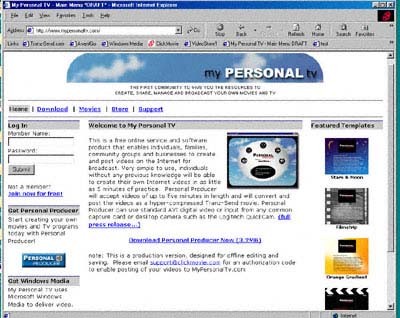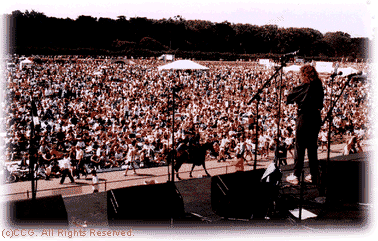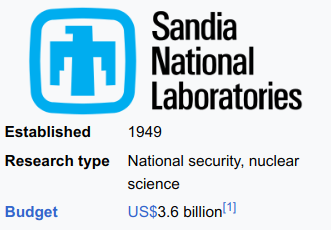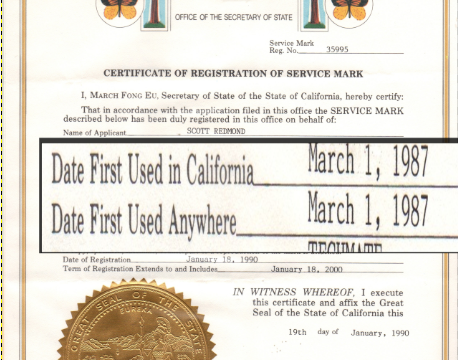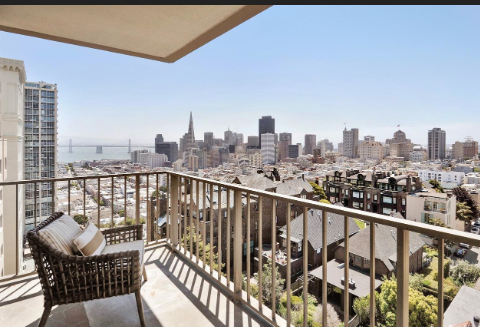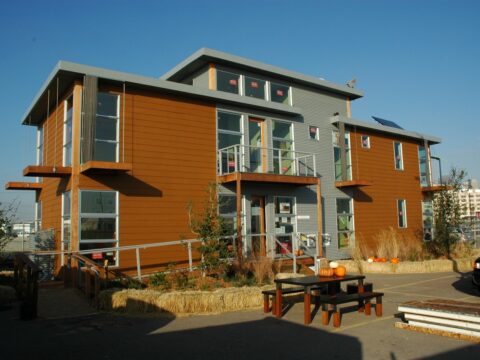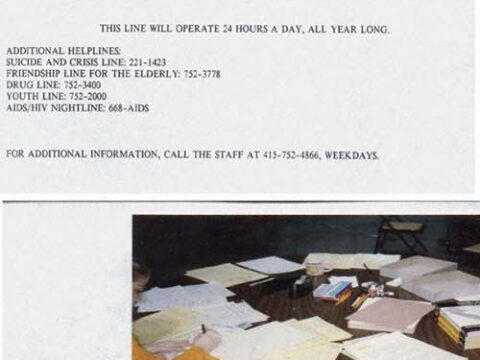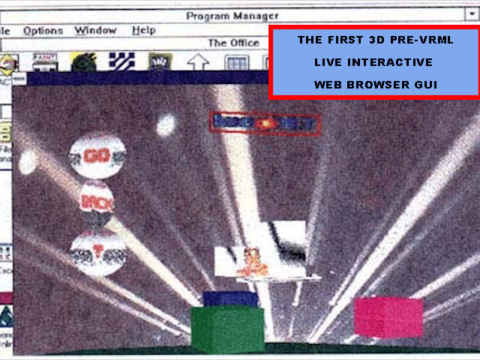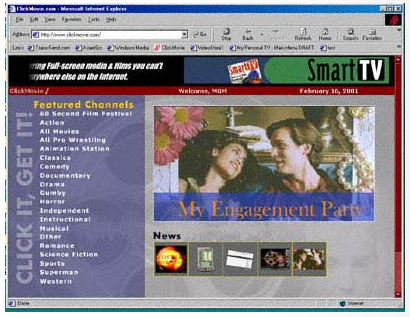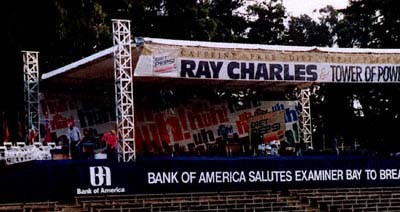BUILDING THE FUTURE…

“I have been an advocate of advanced construction technologies, pre-fab and zero-net energy building for decades. I have founded and sold building companies and promoted SIPS and novel building with NAHB, DWELL, Discovery Network, PATH, HUD, Energy Star, CNET, etc. My friends and I even got the White House to mention “tiny homes” in recent public announcements…”
– PRODUCER – CREATOR: THE NOWHOUSE NATIONAL HOME-BUILDING TECHNOLOGY DEMO HOME PROGRAM
– PRODUCER – DEVELOPER: MULTIPLE MODERN HOME SHOWCASE BUILDS
– SHOW SUBJECT: DISCOVERY CHANNEL REALITY TV SERIES ON HOME BUILDING
– Scott Douglas Redmond was Creative Director and Founder of THE NOWHOUSE at The San Francisco Giants Stadium. Scott has led numerous novel construction projects, Presented LIVE and nationally via CNET and the NAHB, millions of people learned about the latest construction technologies with this Smart Home program which was donated to the City of San Francisco and moved by barge to become a permanent community center. Scott’s project was the inspiration for the Better Homes & Gardens TV series, which also featured Scott. Scott has produced numerous construction showcase homes and building efforts. He donated technologies from this effort to the Tsunami Recovery effort for Japan. THE NOWHOUSE was a multi-thousand square foot, 2-story, modern, high-tech demo home valued at $3 million+ (San Francisco Market Rate) donated to Gavin Newsom and The City Of San Francisco by Scott and his Team. Scott has produced multiple high-tech demonstration home projects for public and industry showcases. Scott has created multiple patented technologies for safe, non-toxic, efficient construction.
Many people don’t know that their new home can be more affordable than they might think!
– California has the worst housing crisis in HISTORY! Call Sacramento and insist that the State fund the CALHOME fund and DOUBLE the budget for CALHOME. It is the ONLY program that can directly help individual families! Habitat for Humanity, myself, my peers and the public may have gotten CALHOME restarted. Take a look at this: CalHome-and-Serna-Homeownership-Public-Comment-Notice-Memo
– Many politicians make lots of WINDOW DRESSING, PR statements about helping individuals but then only give the government money to developers who financed their politicians campaigns! When experts are asked: “HOW DO YOU SOLVE THE HOUSING CRISIS?”

– We contacted EVERY COUNTY in California and got different info from each one. We found there was no single aligned strategy.
– https://www.calhfa.ca.gov/homeownership/programs/ForgivableLoan.pdf CAN GET YOU A HOUSE NOW!
– Nobody can get government support to built a home because it would compete with the developers who financed the dirty politicians campaigns!
– Billions of dollars were sent to California, by the feds, to help individual citizens. The money came from the citizens own pockets. 99% of that money was given to developers who financed the politicians campaigns and none of it went to citizens to build homes.
– Investigators traced the federal funds back to the family bank accounts and stock market accounts of the politicians that control California!
– Fair Housing Advocates have identified over 200,000 people that already have lifetime mortgage payment funds HUD housing funds IN THEIR HANDS but The State Of California blockades these people from building homes… EVEN THOUGH CALIFORNIA SAYS “THE HOUSING CRISIS IS BECAUSE WE HAVE NOT GOT ENOUGH HOMES!!!” HUD says this is illegal but HUD has yet to sue California to stop the blockades.
See: HUD S8 HOME OWNERSHIP PROGRAM
– All of the land on the Stanford Campus could solve all of Silicon Valley’s housing crisis. The State of California should take all the land away from criminally corrupt Stanford University and build housing for average income on it. Corrupt Stanford University (now almost entirely based on bribes) doesn’t “deserve” anything any more.
– The State politicians will do anything to stop those 200K people, with mortgage cash, from building their homes because developers who financed the politicians campaigns will poop their pants if their payola conduits are cut off. Are you stuck in this loop? Then take a look at: Could_your_clients_benefit_from_USDAs_Rehab_Repair_Guaranteed_Loan_Feature
– Part of the housing crisis is because California politicians invited half of South America to move in in hopes of rigging the voter rolls. Most of the people that showed up are actually construction labor people, but California won’t let them build homes because they are not in a union and because they compete with developers who financed the politicians campaigns. The irony is mind-boggling!
– We called EVERY housing counseling agency, every PHA, every county housing agency and California Housing manager and everyone else. They all said that there is “NO WAY” to build a home in California because the laws, and ‘rules’ have been staged to make it impossible. Why are the laws and rules staged that way?: To protect developers who financed the politicians campaigns!
– What happens in California generally spreads across America. If you want it like this in your town. DO NOTHING. If you want this fixed: FIRE YOUR POLITICIANS IN THE NEXT ELECTION!
The $200,000.00 Home! Want One? HERE IS THE OFFER!
Certain people don’t want you to know that you can build a home in 2022, ANYWHERE in America, for $200,000.00 (or less). In the Bay Area and New York, they want you to think that a home should cost you three million dollars+.
In California, New York and many other places, counties have recently spent over $900,000.00, PER UNIT!!!, to build a single studio apartment for their citizens. San Francisco spends over $70,000.00 per year to spray a white square on the ground per homeless tent. You can rent 3 whole Section 8 apartments in Tracy, California for that much money.
How about a single-family two bedroom home for $200,000.00? Many people can qualify to receive $1600.00+per month from HUD to help pay the mortgage on their home! You can receive this money under the national HUD Home Ownership Voucher HCV Homeownership Regulations (24 CFR Part 982, Subpart M) – HCV homeownership regulations are found in Sections 982.625-982.643 per the Statement of Homeowner Obligations. A woman named Marcia Fudge is in charge of getting these funds to every single American that qualifies. She is the head of HUD in Washington, DC. This is her #1 job. Give her a shout. There are many other programs like this, ask her to double-up on the HUD Home Ownership programs… now, more than ever! Counties have HUNDREDS of acres of empty, or unused, land. The housing crisis is in such an emergency state that shocking new approaches must be considered.
With a little ‘sweat equity’ and some creative land use, YOU can get your $200K house!
Freddie Mae and Freddie Mac recently announced that First-time buyers need as little as 3% down and can use rent payments to qualify for an ADU construction loan.
It just got a lot easier to qualify for a mortgage covering the construction costs of an accessory dwelling unit, commonly called casitas, in-law units and granny flats.
Freddie Mac announced ADU rental income on a single-unit primary residence can be used to qualify for a mortgage. Previously, rental income could be used only by disabled borrowers to qualify for loans to purchase, renovate or refinance ADUs for their caregivers.
Additionally, Freddie expanded its mortgage menu to provide purchase or refinance loans for one ADU on 2- and 3-unit properties. Previously, it was single-unit ADU financing only.
The big opportunity is a combination loan covering the purchase of a home and the construction of an ADU.
Freddie’s Choice Renovation Mortgage (cs-272_choicerenovation_fact_sheet_final2 ) allows “first-time” buyers who haven’t owned a home in the past three years to put as little as 3% down and build an ADU. Repeat buyers who have owned a property within three years need to put 5% down.
The down payment is based upon the completed value of the property or the sales price plus the cost of the project, whichever is less.
For example, say the purchase price is $475,000 and ADU construction costs $150,000. That’s a total cost of $625,000. If the appraised value of the home and the completed ADU is projected to be $700,000, the down payment would be based on the lower value of $625,000 – or $18,750 for a first-time buyer or $31,250 for a repeat buyer.
There are no income restrictions. And being able to consider the ADU rents may mean the difference between a loan denial and qualifying in high-cost California. ADU rents cannot exceed 30% of your total qualifying income.
Choice Renovation can also be used to refinance your existing first mortgage and pay off short-term debt used for ADU construction.
ADU construction costs run about $200 per square foot in Orange and San Diego counties, compared with $329 per square foot in the Bay Area, according to Dan Dunmoyer, president and CEO of the California Building Industry Association. The average ADU size is 700-750 square feet, and the average rent is $2,000 to $2,800 a month.
Let’s say you added a 725 square foot ADU at $200 per square foot, for a total cost of $145,000. Assuming you get a 30-year mortgage at 5%, the payment would be about $925 per month, including taxes and insurance. If the rent totals $2,400 per month, you just made yourself a handsome $1,475 per month. Can you say smart investment?
It got a lot easier to add ADUs in California in 2020 after state lawmakers removed lots of red tape and timeline restrictions.
ADUs will help the California rental property shortage.
Figures from state and industry officials show the number of new ADUs jumped from no more than 9,000 in 2018 to more than 19,000 in 2021. Seventy thousand U.S. homes sold in 2019 had an ADU, up from 8,000 in 2000, according to a 2020 Freddie Mac report.
“The growth of accessory dwelling units (ADUs) in the United States has been dramatic, particularly in high-cost areas seeing significant population growth,” the report said. ADU demand is highest in California, Florida, Texas and Georgia.
The devil is in the details.
For example, Freddie financing requires ADUs to have a separate entrance, a kitchen and a bathroom.
The borrower can occupy the ADU and rent out the home. Attached or detached ADUs are acceptable. Even a garage conversion works.
Besides stick-built ADUs, there are manufactured ADUs that are trucked in and hoisted into place with a crane. Even some homebuilders are adding ADUs as an option, Dunmoyer said.
When picking a contractor, be prudent, cautious and careful. Take the time to tour their completed projects. Thoroughly interview references and check licensing. Finding a competent, dependable and reasonably priced professional is key.
Freddie Mac rate news: The 30-year fixed rate averaged 5.23%, 14 basis points higher than last week. The 15-year fixed rate averaged 4.38%, 6 basis points higher than last week. The 5-year ARM averaged 4.12%, 8 basis points higher than last week.
The Mortgage Bankers Association reported a 6.5% decrease in mortgage application volume from the previous week.
Bottom line: Assuming a borrower gets the average 30-year fixed rate on a conforming $647,200 loan, last year’s payment was $785 less than this week’s payment of $3,510.
What I see: Locally, well-qualified borrowers can get the following fixed-rate mortgages without points: A 30-year FHA at 4.625%, a 15-year conventional at 4.375%, a 30-year conventional at 5.25%, a 15-year conventional high-balance ($647,201 to $970,800) at 5.25%, a 30-year conventional high-balance at 5.625% and a 30-year purchase jumbo at 4.75%.
ONWARD AND UPWARD.
The “whiners” like to put out a lot of hot-air about how this is “impossible”. Just to head them off at the pass, here is a very rudimentary overview of one of a hundred ways to validate that $200K number:
Building a House For Under $200k:
Per UPGRADED, Home prices in America are rising every year thanks to greed, political payola and profiteering. The median price doesn’t seem to show any sign of it slowing down. Just about any homeowner would build a house for under $200k if the market made it easier. Luckily, you can build a house for under $200k, so follow along as we detail one of many easy ways to do so. It’s a HOUSING CRISIS in America. Now is the time to break the rules and avoid breaking your bank account!
Designing and building your dream home is an exciting prospect. It can seem unattainable and overly expensive to many people, but it does not need to be. Developers and crooked politicians want you to think you can’t do it… BUT YOU CAN!
You can build your dream home for under $200k.
The average selling price for houses today is $300k. If you carefully choose your floor plans, square footage, location,materials, and the property it sits on, you can build a house for under $200k that will save you money.
If you want to build a house for under $200k, there are several things that you need to do, such as:
- Minimize the square footage
- Choose cheap materials
- Keep it to one story
- Build simple
More than anything, the biggest expense in building a home is the labor and materials. If you choose a lot that is already developed,that can save you a fortune that goes towards materials and labor.
Let’s take a close look at everything that goes into building a house on a budget.
Do You Need to Hire an Architect or a Builder?
Get free, zero-commitment quotes from pro contractors near you.
Where to Begin
What region are you located in? Depending on where you are located, building a home can vary greatly in cost. That comes down toeverything from lot costs, local regulations, and the average cost of square foot in the effected region.
The location of the lot that you are trying to build on plays a key role as well. If you want the costs of your new home to be under$200k once all is said and done, choose a developed lot.
More often than not, developed lots are already in prime condition for a house to be raised. That includes easy plumbing set up, gaslines and ease of access for the workers building the house.
If you are dead set on building your new house on an undeveloped lot, it will be extremely hard to stay on budget due to added cost.That is because you will be paying for labor for a longer period of time. Undeveloped lots require excavation which can cost up $4,000 for small lots.
Floor Plan Pricing for Your 200K Budget
Building a home will cost at least $153 per square foot, which means you’ll be right under the 200K budget. This means youcan expect to build a home that’s around 1,200 square feet.
The Design Phase & Cost Per Square Foot
How many square feet do you want your new house to be? The average cost per square foot differs depending on where you are located. On average, the cost per square foot is $153 when building a home in the United States.
With that number in mind, consider how much of your budget you want to go towards square footage. If you wanted to build a 1,200 square foot at $153 per foot, for example, it would cost $183,600. It could be more or less varying state to state.
That would leave you room in your budget to spend money on furnishing and new appliances. However, going with 1,000 square feetinstead leaves you with more room to put the remainder of your budget towards settling into your new home.
Going down from 1,200 to 1000 square feet could trim around $30,000 on building your house.
Square footage also affects the cost of the design. On average, architects’ cost $1.50 per square foot in the design phase. If your new house you are planning is going to be 1,200square feet, that will cost you at least $1800.
Building Cost Per Square Foot (By State)
| State | Building Cost Per Square Foot |
| California | $165.66 |
| Connecticut | $172.17 |
| Florida | $129.90 |
| Georgia | $116.66 |
| Illinois | $132.91 |
| New Jersey | $162.64 |
| New York | $165.01 |
| Pennsylvania | $127.15 |
| Texas | $112.98 (See Why The Californians move here?) |
| Virginia | $133.94 |
Choosing the Right Materials
Considering that labor and materials account for the majority of the costs of building a new house, it is important to choose wisely. There are several cheap materials that are also durable and aesthetically-pleasing,including:
- Reclaimed wood
- Prefabricated materials
- Brick
- Bamboo
- Concrete
Not only are those materials big money-savers, but they also each have a distinct look. More and more, homeowners have been building houses built with concrete. It creates a modern look while also saving money.
Prefabricated materials may just be the biggest way to build a new house for under $200k. Modular homes are wildly popular today, and it is because of how cost-effective it is.
A modular home is one that is mostly constructed section by section at a different location then brought in and installed onsite. There are many possibilities for style and layout without modular homes and it does not only limit you to one story.
You can even have a modular home built atop a basement if you want to add value to your new house. Besides modular homes, choosingmaterials like reclaimed wood, classic brick or bamboo can save you as well.
Building a Garage
Do you want your new house to have a garage? Building a garage costs roughly $49 per square foot but can vary based on materials. A one car garage can cost up to $14,200.
If you want a two-car garage, however, the least you will spend is likely $19,600, with $28,200 or more being the highest. To be cost-effective, you could choose tobuild a one car garage and if there is room for a driveway or street parking, park the other car or cars there.
Spending up to $28,200 or more for a two-car garage is more than 10% of your budget and may not be worth it.
Every Choice Counts
If you want to stay on budget, stay simple with all of your design choices. Each decision adds to the cost, whether it be those extrasquare feet or the roof that you choose. The roof alone will cost you roughly $7,200 minimum on average, if not more.
Every single choice in building a host adds to the price tag, right down to the foundation. There are only a few options forfoundations, but the cheapest one is the classic slab foundation.
Typically, you only spend $5-$7 per square foot for a slab foundation. If you want a basement, however, you will need a costly full basement foundation. A basement foundation costs anywhere from $10 to $25 per square foot.
Basements add cost besides just the foundation, such as plumbing and electrical work, so you should consider whether or not you need abasement for the budget. Basements can cost up to $30,000 or more when all the costs are totaled.
Be Frugal With Finishes
Your new house can look great without having to overspend. One of the big costs that comes late in the process of building a house isthe finishes.
While marble and granite tops do look great, they are also extremely expensive. Marble alone costs between $125 and $200 per square foot and depending on the size of the kitchen, that can get quite pricey.
You would be spending at least $1,000 and $10,000 depending on the size of the kitchen with premium materials likemarble or granite.
A great alternative to granite that can save you a fortune is tile. Tile costs between $5 and $30 and has a classic yet modern look. You are usually not going to spend more than$3000 for tile countertops including the cost of labor.
Another great countertop finish option that is inexpensive is laminate. Laminate countertops are a little bit more expensive than tile, coming in at $25-$50 per square foot, but they are still a great deal.
The best thing about laminate besides the price is that there are many designs to choose from. Laminate countertops can look just asgreat as granite or marble countertops.
Installation and materials together won’t cost more than $2000, on average, and your counters will look gorgeous.
Plumbing Costs
Plumbing is one of the bigger costs in building a house. If you want to build your house for under $200k, consider the plumbing whenchoosing your square footage. The bigger the house and the more sinks, bathrooms, and showers it has, the more costly the plumbingwill be.
Plumbers and contractors charge you per sink, toilet, water heater, shower, washer/dryer, bathtub, and water line. Typically, youwill have to spend between $600 and $1,600 per sink toilet, shower, etc., etc. Keep that in mind when you are deciding on floorplans.
The type of piping that you choose for your house’s plumbing affects the total cost. Copper is the most common and popular type ofpipes for plumbing. That is because copper is durable and long lasting and can cost up to $5 per square foot.
When compared to PEX pipes that cost $1.50 per square foot on the low end, copper is not an ideal plumbing material to stay onbudget. The cost of PEX plumbing is rarely more than $6,000 at the high end.
Copper piping, on the other hand, costs between $8,000 and $10,000. PVC is another cheap alternative to copper that costs $1.25 per square foot on average and can save you up to $5,000 when compared to copper.
Flooring Costs
Floors, much like countertops, are only as expensive as the materials that you choose. There are several budget floor materialsthat can keep your building costs under $200k, such as:
- Vinyl sheets
- Vinyl planks
- Oak wood
- Laminate
Laminate flooring, for example, only costs between $2 and $8 per square foot. If the house you are building is 1000 square feet and you wanted laminate floors throughout it all,materials would cost no more than $8,000 at the most, excluding labor.
One of the cheapest flooring material options available is vinyl sheet flooring. You can spend between .50 cents and $2.00 per square foot for vinyl sheet flooring. It is a cheaper alternative to vinyl plank flooring which costs roughly $5.00 persquare foot.
Vinyl plank flooring may cost more than vinyl sheet, but it is still much less than the $10 to $20 per square foot that marble wouldcost.
While it may seem expensive because of how great they look, oak wood flooring is a great budget option when building a house. Regular oak wood floors cost $2 to $6 per square foot. If you want to go with a different, brighter style, you could go with white oak floors that cost $5 to $8 per square foot.
Painting Costs
When your house is finally built, it is time to get it painted. Interior and exterior painting costs are different. If your new houseis 1,000 square feet, for example, painting the exterior could cost between $1,000 and $3,000.
To paint the interiors of the same 1,000 square foot house could cost between $1,500 and $3,000. Prices vary depending on labor, type of paint and how much is being painted. Depending on the materials that you chose,the exterior may not need to be painted.
If you went with classic brick, stone, or prefabricated materials, you probably do not need to paint the outside at all. The interior ismore expensive than the exterior because generally there are more surfaces to be painted inside.
Because of that, the painter or painters have to spend much more time priming and preparing the walls for the paint. The paint itself is fairly inexpensive ranging from $25 to $70 per gallon roughly. In general, two gallons of paint is considered enough to cover 800 square feet.
If your house is 1,000 square feet, that means you would be between $50 and $140 for the necessary paint. That is not asexpensive as the labor which makes up for $1,200-$2,860 cost of having a 1000 square foot interior painted.
Electric Costs
Electrical work is a huge expense in building a house. Generally, workers will charge you between $40 and $100 per hour/100square feet. That is before the costs of materials, parts, wiring, or individual fixtures, such as lights.
Outlets and lighting fixtures cost up to $150 to have installed by an electrician. To have a 1000 square foot house wired can cost you between $2,000 and $6,000. If the house has a garage, it will be an additional $1,000 to $4,000 to get it wired as well.
What Did We Learn?
Building a house for under $200k is easier than it seems. All that you have to do is carefully consider the square footage andmaterials.
Cutting back on unnecessary frills like granite or marble and choosing to build on a developed lot can save you a fortune.
You can truly build a beautiful home for $200k with a little bit of ingenuity and careful planning.
So… you, with the same amount of money, can either build a poop-hole:
OR YOU COULD HAVE A HOME, DESIGNED BY ARCHITECTS, LIKE ONE OF THESE:
Do you think this idea is a ‘nice option’? It’s not just a ‘nice opion‘; it is now an EMERGENCY MUST HAVE. Here is why?
Public officials who are in charge of City, State, County and Federal Budgets generally get paid over $140,000.00 per year and live in wonderful homes. They never have to worry about any of their own housing issues. These housing issues are distant and unconnected to their own experiences.
The lack of affordable housing for low- and extremely low-income households has become a serious EMERGENCY problem in the U.S. for several decades. The last two years of historic rental growth immigration promotion and soaring home prices have only made matters worse, causing an even wider gap in available affordable housing.
Here are three charts that show just how serious the problem is.

Image source: Getty Images.
1. There aren’t enough affordable homes
The National Low Income Housing Coalition (NLIHC), a not-for-profit organization focused on advocating for affordable housing, found in its 2021 GAP report that for every 100 extremely low-income renter households, which are those who earn 30% or less than the median income for the area, there were only 37 available homes for rent in 2019. Those earning 50% or less of the median income had 60 homes for every 100 households.

Image source: National Low Income Housing Coalition.
Today’s affordable housing crisis goes a lot further than housing the nation’s poorest families. The number of those who can no longer afford to buy or rent without majorly exceeding the recommended income threshold of 30% is rising due to the movement of the markets over the last two years.
2. The number of burdened households is expanding
Rapid rent growth has been spurred by record demand and a shortage of homes across the board. Homes that were once considered affordable as related to the median income for the area have increased pricing to match market rents, further reducing the supply of affordable homes. The cost of rent jumped 10.1% from 2020 to 2021, with some markets seeing rent prices climb in the 20% to 40% range year over year.
As of January 2022, wages grew at a national average of 4.5% from December 2020, clearly not enough to overcome higher costs for housing. When coupled with inflation, which reached 7% by the end of 2021, it’s clear the burden on housing costs is only getting more severe.
A recent report from Vio Smart Security shows that close to half of the country has a rent-to-income ratio of 30% or higher. Florida has the highest percentage of residents paying 30% of their median income on rent, with other expensive states following close behind, like California, Oregon, and New York, to name a few.

Image source: Vio Smart Security.
Cities like Tampa, Florida; Phoenix; Fort Worth, Texas; Charlotte, North Carolina; and Las Vegas, which have seen a huge uptick in inward migration over the past two years, are among the leaders in the greatest change in housing affordability year over year. Notoriously expensive markets on the West Coast like San Francisco, Los Angeles, and Seattle, as well as those on the East Coast, including cities like Boston, Washington D.C., and New York City, continue to be among the worst U.S. cities for affordable housing.
These markets aren’t alone. In Q4 2021, 77% of the 575 counties surveyed are less affordable than their historical average, and one in five counties require an income of $75,000 or more to afford the median-priced home.
3. The golden rule is no longer a rule — more like a pipe dream
No state has an adequate supply of affordable housing for its lowest-income earners, but it’s no longer just the lowest-income earners who can’t afford to rent or buy. The nation is getting alarmingly close to needing half of all residents to pay 30% or more of their income to rent. Spending 30% or less of income, which is considered the target range for the cost of housing, is no longer the gold standard but an idyllic goal that is unattainable for the average American.
When consumers are forced to spend 30% or more on housing costs, they are considered “house burdened,” which means they have less money to spend on items like child care, healthcare, food, gas, and other necessities for living. A recent Statista report shows the number of households that are cost burdened due to housing has increased steadily since 2013, except for 2017. Today, there are an estimated 44.01 million rental households considered cost burdened.

The faces of those who are most impacted are diverse, with a mix of reasons for the financial hardships. This issue disproportionately affects people of color, but seniors and people with disabilities make up around 48% of low-income households impacted by the lack of affordable housing. The issue is widespread, and it impacts all of us. When there is a lack of affordable housing, people can be forced into unsafe living conditions or experience homelessness. This situation can also negatively impact quality of life.
Federal policies and local public housing initiatives are one way to combat the issue, but it won’t be enough to fill the growing gap. Those in the private real estate investing market will need to take part in creating and preserving affordable housing units to ensure everyone has a home. Using creative structures to help tenants become homeowners for the long term could be a beneficial play for all involved. And exploring alternative housing constructs, including 3D printed houses, prefab homes, and mobile home communities, could help alleviate construction costs and make housing more affordable for investors, developers, and ultimately tenants. The main problems with current American housing are detailed here: SOLVING AMERICA’S HOUSING CRISIS 2022B
NEWS UPDATES ON THE EFFORT:




